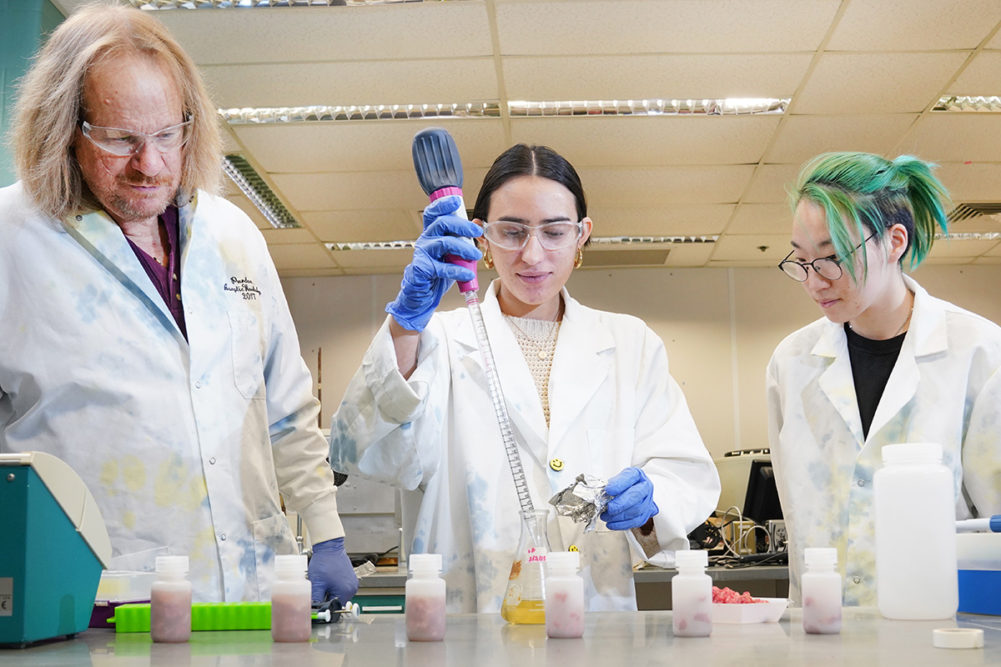WEST LAFAYETTE, IND. — Researchers at Purdue University recently developed a new analysis to detect E. coli in ground beef.
The US Department of Agriculture’s Food Safety and Inspection Service (FSIS) has maintained zero tolerance for O157:H7 E. coli since 1994.
With that standard, if one cell of E.coli is detected with a standard 325-gram (11.4 oz) sample of ground beef, the entire batch will be flagged as unfit for consumption. The toxin made by E. coli accounts for 175,000 illnesses annually in the United States.
“The issue is, you need to have a detection technology where you can find one cell in your sample,” said Bruce Applegate, a professor of food science at Purdue and leader of the project. “But one E. coli cell is almost impossible to find in a 325-gram sample. There’s not a technology able to do that unless you do what we call an enrichment.”
The enrichment process by Applegate and the team includes preparing a special environment that allows E. coli O157:H7 to outcompete all other microorganisms in a food sample before testing.
“Instead of one cell in this 325-gram sample, I will have 10 million to 100 million of these cells in there. I can guarantee I will find it then,” Applegate said.
The analysis will enrich the sample and can detect E. coli during the 15 hours or more required to ship samples from the facility to an FSIS testing laboratory.
The new analysis saves time by combining enrichment and detection during shipment. Applegate and five co-authors published the details of their analysis in the journal Foods.
“Having an accurate reading in a very short amount of time means everything to not just the food industry, but safety as a whole,” said Chuyan Chen, co-lead author of the Foods’ paper. “We know that O157:H7 isn’t the only microorganism that can get humans sick. There are many others,” she said.
Chen, who received her master’s degree in food safety and microbiology at Purdue in 2018, now works in the consumer packaged foods industry. Chen added that the work shown in this analysis could be applied to other food pathogens.
The new analysis shows implications for countries in Africa, South America, and other areas with fewer resources than the United States to invest in food safety.
“The testing methods that we have in the US are expensive,” said Claudia Coronel-Aguilera another co-author and former postdoctoral researcher in Applegate’s lab. “But the method described in the Foods paper is a fast, easy and much less expensive version of the highly effective lab methods. That will be a game changer.”
Coronel-Aguilera works as a research scientist in the dairy industry.
The researched system is based on phages — viruses that infect specific bacteria.
“We genetically modified this phage in such a way that it would infect the bacteria and cause it to produce light,” Applegate said.
After infecting E. coli O157:H7, the phage integrates its genome into the bacterial cells’ chromosomes. Once integrated into the E. coli O157:H7 chromosome, the phage produces an enzyme that makes light and causes the infected cells to glow. A glowing culture indicates the presence of the pathogen.
“Then you’re making more bacteria glow over time,” Applegate said. “It’s like shingles in a way. You get chickenpox. You get blisters from the dying cells, but also that virus gets into your cells and then you get shingles later on.”
Other co-authors listed on the Foods paper include Arun Bhunia, a Purdue professor of food science, and Andrew Gehring and George Paoli of the USDA’s Agricultural Research Service in Wyndmoor, Penn.
Gehring and Paoli’s collaborations with Applegate are part of a longstanding cooperative agreement between the USDA’s Agricultural Research Service and Purdue’s Center for Food Safety Engineering.




